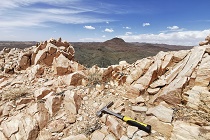 The southern part of Mongolia and the Gobi Desert area have attracted researchers from all over the world for decades. The region is well known to Polish geologists, who were among the first in the world to successfully conduct geological and paleontological research here and take part in the prospecting of mineral deposits.
The southern part of Mongolia and the Gobi Desert area have attracted researchers from all over the world for decades. The region is well known to Polish geologists, who were among the first in the world to successfully conduct geological and paleontological research here and take part in the prospecting of mineral deposits.
This time, experienced in research in Mongolia, the staff of the Polish Geological Institute - NRI: Dr. Rafał Sikora and Prof. Antoni Wójcik were invited to cooperate in conducting archaeological research. The first season of excavations and supporting geological research has just ended.
The tasks are being carried out under the three-year from the National Science Center (from pol. Narodowe Centrum Nauki, abbr. NCN) grant 2019/33/B/HS3/01113 entitled Around Tsakhiurtyn Hondi. Research of the Stone Age borderland of the Altai and Gobi Deserts in Mongolia under the direction of Prof. Miroslaw Masojcia of the Institute of Archaeology, University of Wroclaw (UWr.). The expedition has an interdisciplinary and international dimension, with a total of 18 people participating in the first season of work. The research team, in addition to the PGI-NRI staff, consisted of scientists from the Department of Non-European Archaeology at UWr, the Institute of Mineral Raw Materials and Energy Management of the Polish Academy of Sciences in Cracow (IGSMiE PAN), the Archaeological Museum in Gdansk (MAG), the Institute of Archaeology and Ethnology of the Mongolian Academy of Sciences (MAS) and the National Mongolian University of Education (MSUE) in Ulan Bator. It is noteworthy that this was the largest Polish-Mongolian scientific expedition to Mongolia in the past 20 years. The research was accompanied by a project to photographically document the fieldwork, which was led by Sonia Erdenesaikhan of the National Mongolian University of Arts and Culture (MSUAC) in Ulan Bator.
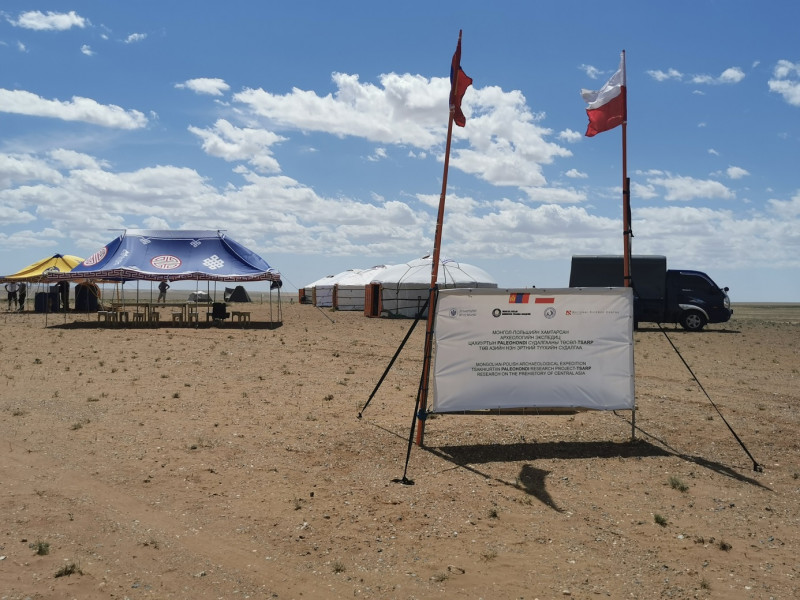
The camp of a Polish-Mongolian scientific expedition in the northern part of the Gobi.
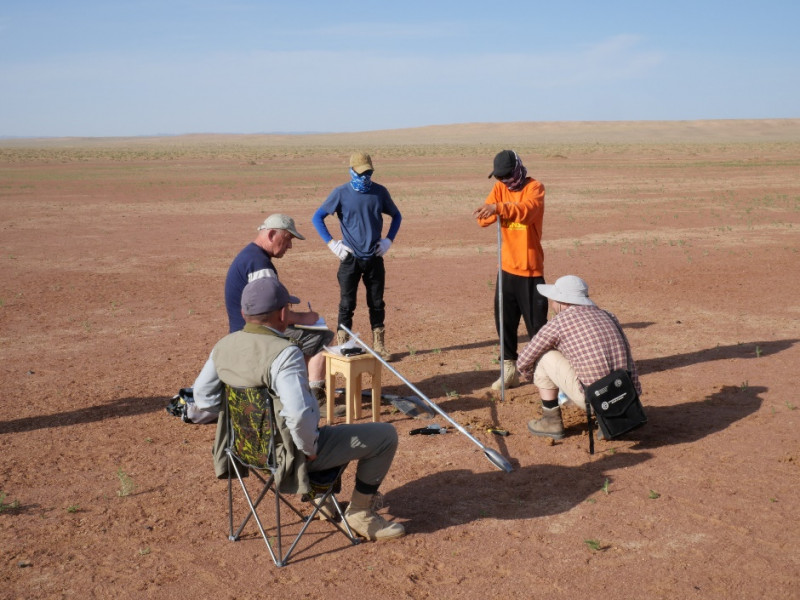
Antoni Wojcik and Rafal Sikora (PIG-NRI) during the study of lake sediments based on depth sounding. Mongolian students were trained in hand probe drilling, and archaeologist Byamba Gunchinsuren watched the work
Geological work is focused on the study of outcrops of sedimentary and volcanic rocks of Cretaceous age, and Quaternary period sediments in the southeastern part of the Bogdyn Nuruu massif and its foredeep. It is one of the massifs included in the Altai Gobi range.
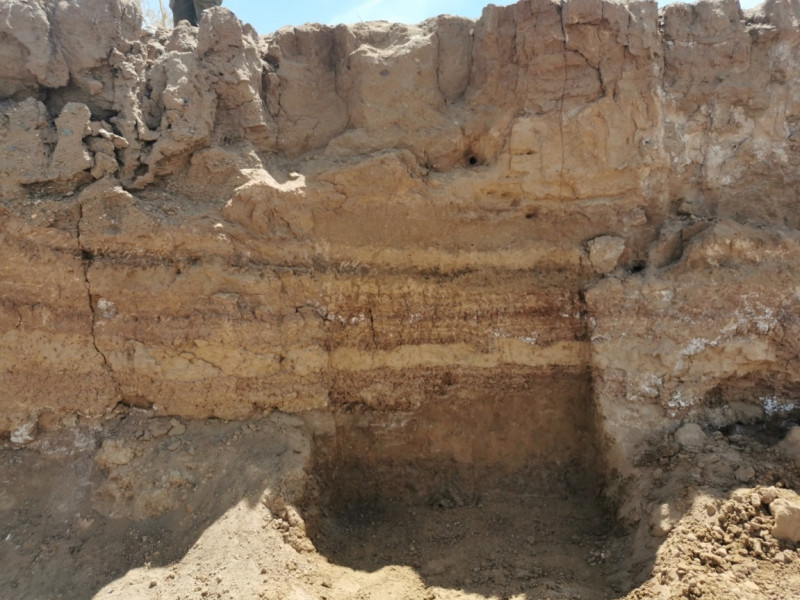
Profile of fluvial and aeolian Quaternary sediments where archaeological monuments are present (Ulan Noor Basin)
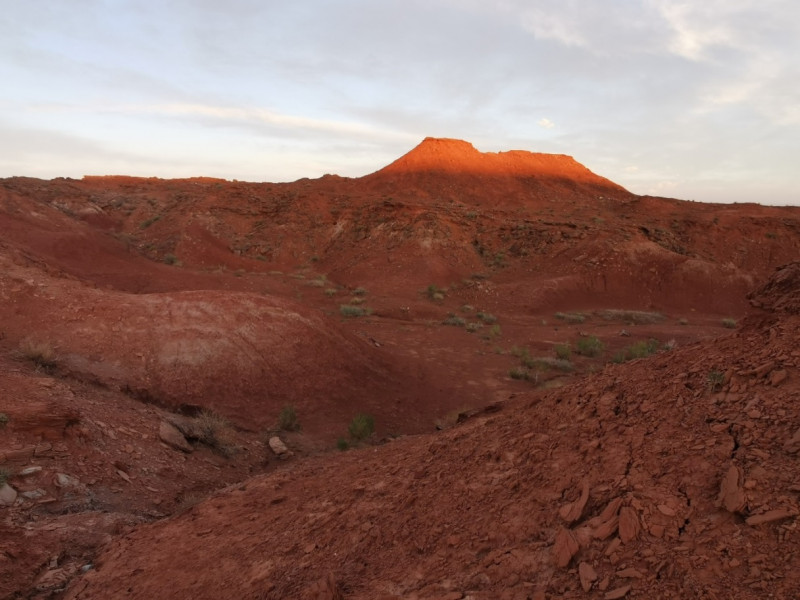
Outcrops of terrigenous Upper Cretaceous sedimentary rocks (Campanian, Djadokhta Formation; Khogil Tsav site) in the southern foredeep of the Bogdyn Nuruu massif (Shereegeen Gashoon Basin)
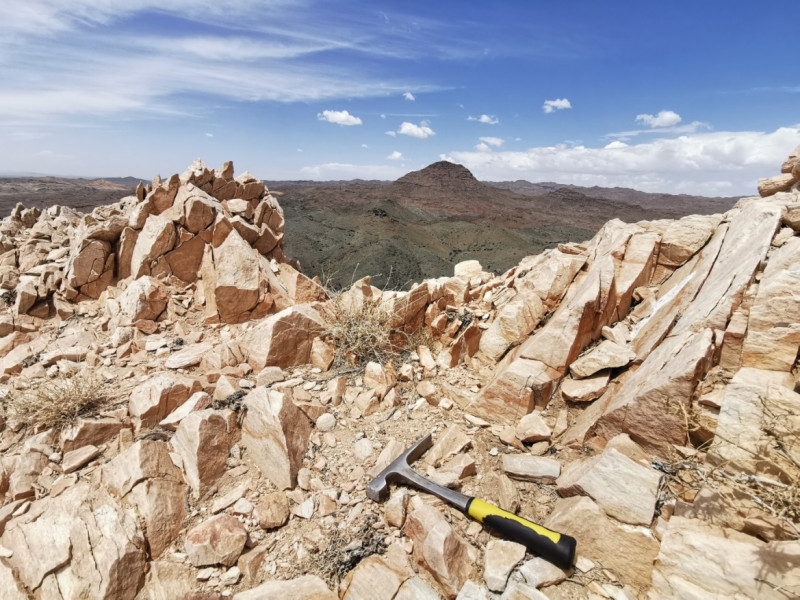
An outcrop of Paleozoic crystalline limestone, with the volcanic rocks of the Bogdyn Nuruu massif in the background
The expedition has already had its first successes. Numerous settlement sites from the Late Paleolithic have been discovered, clustered around Paleochannels that existed during the Pleistocene and Holocene periods. In the mountainous part of the study area, caves were also explored, which were shelters for early people leading a nomadic lifestyle and engaged in gathering and hunting. In one of them, located in the Khutul Usna valley, three settlement horizons (phases) containing stone artifacts and numerous bones were found. The discovery of this site may prove to be a scientific sensation, as the study of intact Paleolithic strata will provide new information about the functioning and living conditions of Paleolithic communities in Central Asia.
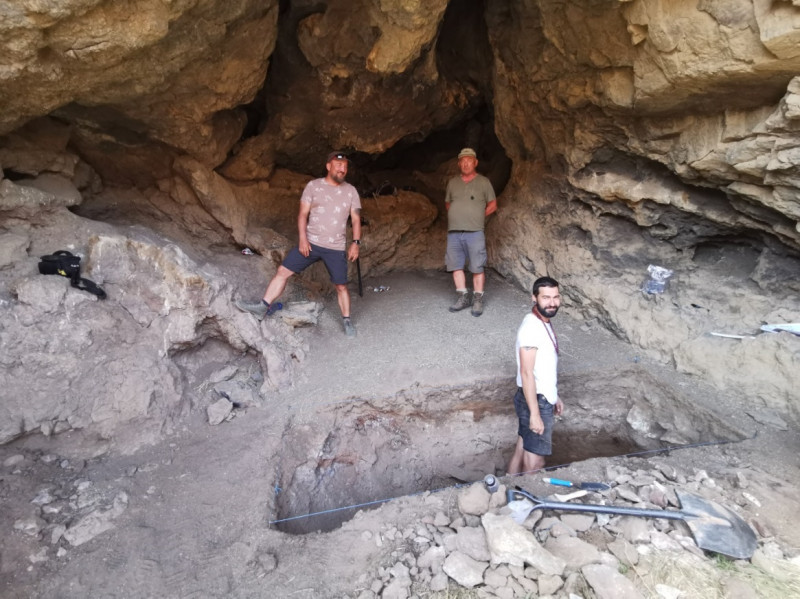
Archaeological and geological research in a cave in the volcanic rocks of the Bogdyn Nuruu massif (Khutul Usny valley). From left: Marcin Szmit (MAG), Antoni Wójcik (PGI-NRI), Grzegorz Marszalec (UWr.)
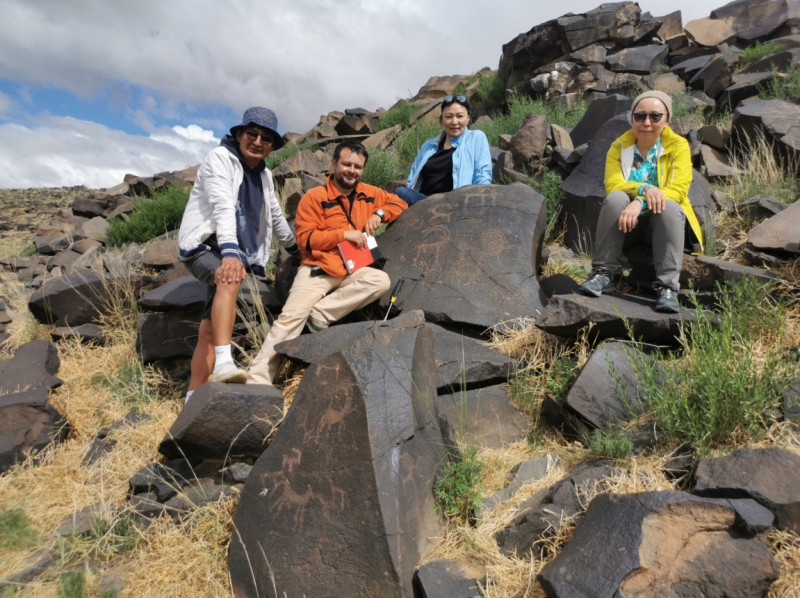
Mongolian-Polish team documenting sites with cave rhytes. From left: Odpurev Gankhuyag (MSUE), Rafal Sikora (PGI-NRI), and Khongorzul Byambasuren and Dorjsuren Uranchimeg of MSUAC
It should be noted that the results of the geological group's work make an important contribution to identifying and pinpointing the source of rock material that was used in the Paleolithic to make tools. On the other hand, the study of lake sediments and cave overburden is aimed at determining the paleoenvironment and climate conditions that prevailed at that time. Undoubtedly, an important additional effect of the geological fieldwork will be to update the existing cartographic picture of the rock outcrops in the area. A field inspection and expert opinion has also been carried out on ancient rock engravings (petroglyphs) in the area north of the Bogdyn Nuruu massif, which may result in a new front of research in the future. Further geological and archaeological work, also involving PGI-NRI staff, will take place next year.
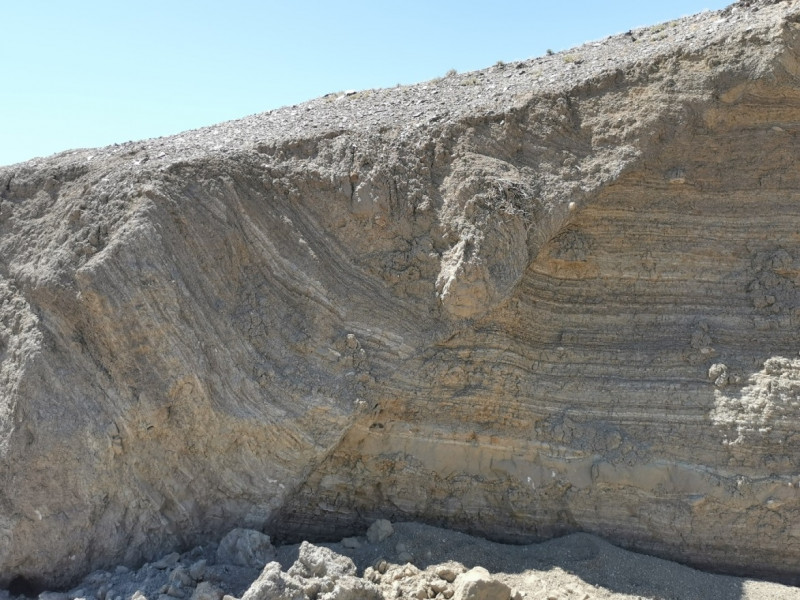
Faults, especially the reverse faults, are evidence of tectonic activity in the study area at the end of the Mesozoic and in the Cenozoic (Shereegeen Gashoon Basin)
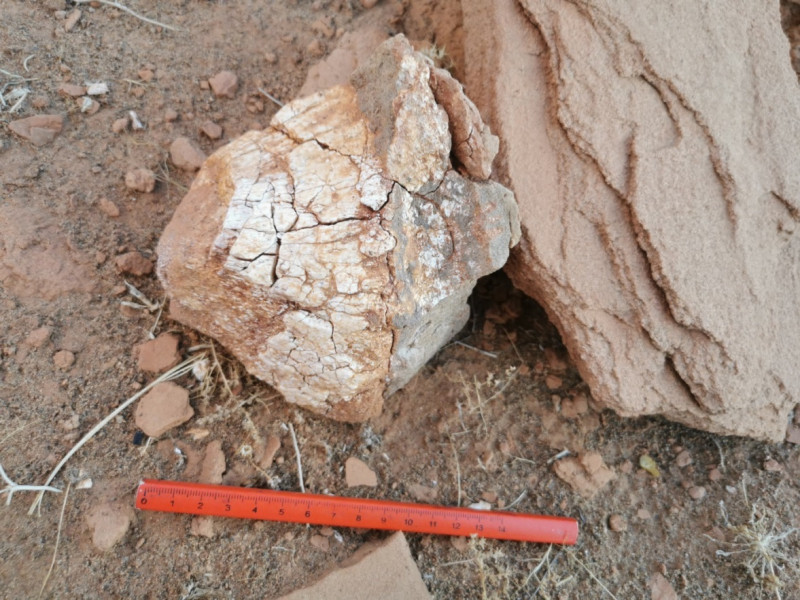
Although the project does not include paleontological studies of Mesozoic reptiles, finding a fragment of a bone of a Cretaceous dinosaur is a joy for any geologist (Upper Cretaceous Djadokhta Formation; Khogil Tsav site; Shereegeen Gashoon Basin)
As usual, the working conditions in Mongolia were not easy, but the area provided discoveries and very interesting geological information, which stimulated the passion for research of all expedition participants. Also important, was the great scientific atmosphere prevailing among the researchers and the great help of our Mongolian colleagues, who actively assisted in carrying out the tasks facing the expedition participants.
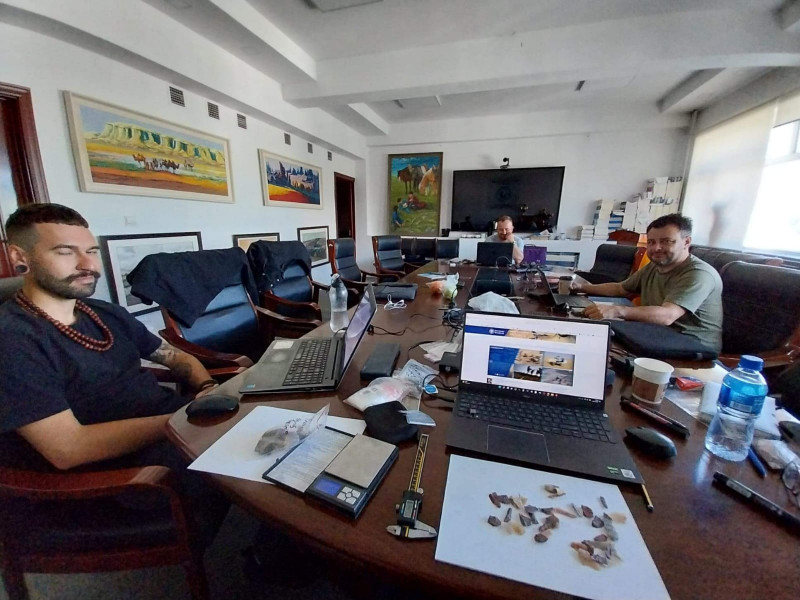
With the excavation season over, it's time to compile the field research report. From left, Grzegorz Michalec, Marcin Szmit and Rafał Sikora
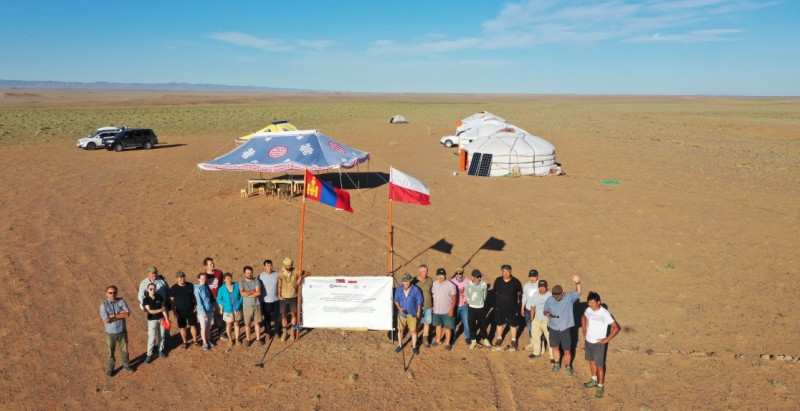
The participants of this largest Polish-Mongolian expedition in 20 years were eagerly visited by many guests, including those from the Embassy of the Republic of Poland and the MSUAC rectorate in Ulan Bator
For ongoing reports on the progress of the study, please visit:: https://pl-pl.facebook.com/archeouniwroc/
Text: Rafał Sikora
Photos: R. Sikora, A. Gałaś, M. Masojć, M. Szmit
Translated by: Tomasz Trzpil














 PGI-NRI offer
PGI-NRI offer Mineral resources of Poland
Mineral resources of Poland  Oil and Gas in Poland
Oil and Gas in Poland 




 Subscribe to RSS Feed
Subscribe to RSS Feed